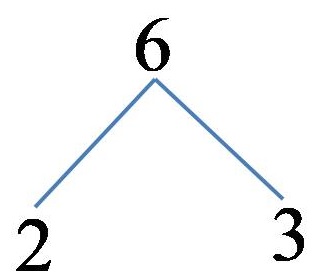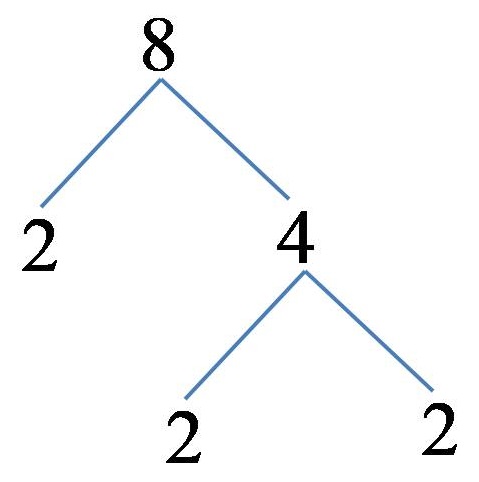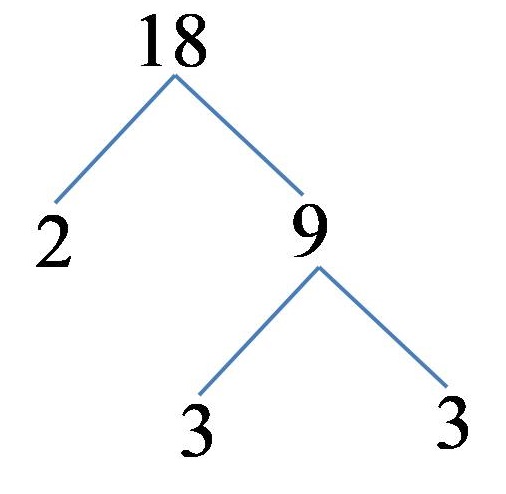Our paper today is dedicated to prime factor decomposition, a procedure that is basic and very important. This procedure is basic, and it is used to successfully implement many other mathematical procedures and operations that follow at a certain more difficult level!
In the text below you have the opportunity to see:
- Rules for prime factor decomposition.
- A few examples with branching of multiples.
- Table of prime factors of numbers from 1 to 100.
- Lots of video examples to help you gain skill and routine in practicing the factoring procedure.
Let’s start with:
Rules For Prime Factor Decomposition
Of course, before we start the procedure for prime factor decomposition, we need to define:
- A prime number is a number that can be divided only by the number 1 and by itself without getting a remainder!
- A complex number is a number which, in addition to being divisible by the number 1 and by itself, can be divided by at least one other part without obtaining a certain remainder!
Now that we already know what a prime number is and what a complex number is, we can start with the rule for dividing prime factors, which reads:
We divide a given number into multiples until all such multiples are in the form of prime multiples! This means that the arrangement and exact path of multipliers that we will choose during the procedure is not important at all.
Examples
Let’s look at some examples of prime factor decomposition, below in the same text!
Example 1: Break down the number 6 into prime factors!
We present the number 6 as a product of the numbers 2 and 3! Because the numbers 2 and 3 are prime numbers, the decomposition procedure ends immediately in the first step! Decomposing the number 6 into multiple branches looks like this:

The number 6, through its prime multiples, can be represented as:
6=2×3
Example 2: Break down the number 8 into prime factors!
We present the number 8 as a product of 2 and 4! The number 2 is a prime number, but the number 4 is not a prime number, so we continue to break down the number 4 further! The number 4 can be represented as the product of 2 and 2! With this in mind, we can represent the branch of multiples of the number 8, which is represented in the figure below:

The number 8, through its multiples, can be represented as:
8=2x2x2
Example 3: Break down the number 18 into prime factors!
We present the number 18 as a product of 2 and 9! The number 2 is a prime number, but the number 9 is not a prime number, so we continue to break down the number 9 further! The number 9 can be represented as a product of 3 and 3! With this in mind, we can represent the branch of multiples of the number 18, which is represented in the figure below:

The number 18, through its multiples, can be represented as:
18=2x3x3
Prime Factor Decomposition Table For The Numbers 1 To 100
Below on this page is a table that contains all the prime factor decomposition for all numbers from 1 to 100. Of course, in the table itself, you have data that shows which of the numbers are prime numbers, so logically there is no need to further decompose them!
| Number | Prime Factor Decomposition |
|---|---|
| 1 | Prime number |
| 2 | Prime number |
| 3 | Prime number |
| 4 | 4=2×2 |
| 5 | Prime number |
| 6 | 6=2×3 |
| 7 | Prime number |
| 8 | 8=2x2x2 |
| 9 | 9=3×3 |
| 10 | 10=2×5 |
| 11 | Prime number |
| 12 | 12=2x2x3 |
| 13 | Prime number |
| 14 | 14=2×7 |
| 15 | 15=3×5 |
| 16 | 16=2x2x2x2 |
| 17 | Prime number |
| 18 | 18=2x3x3 |
| 19 | Prime number |
| 20 | 20=2x2x5 |
| 21 | 21=3×7 |
| 22 | 22=2×11 |
| 23 | Prime number |
| 24 | 24=2x2x2x3 |
| 25 | 25=5×5 |
| 26 | 26=2×13 |
| 27 | 27=3x3x3 |
| 28 | 28=2x2x7 |
| 29 | Prime number |
| 30 | 30=2x3x5 |
| 31 | Prime number |
| 32 | 32=2x2x2x2x2 |
| 33 | 33=3×11 |
| 34 | 34=2×17 |
| 35 | 35=5×7 |
| 36 | 36=2x2x3x3 |
| 37 | Prime number |
| 38 | 38=2×19 |
| 39 | 39=3×13 |
| 40 | 40=2x2x2x5 |
| 41 | Prime number |
| 42 | 42=2x3x7 |
| 43 | Prime number |
| 44 | 44=2x2x11 |
| 45 | 45=3x3x5 |
| 46 | 46=2×23 |
| 47 | Prime number |
| 48 | 48=2x2x2x2x3 |
| 49 | 49=7×7 |
| 50 | 50=2x5x5 |
| 51 | 51=3×17 |
| 52 | 52=2x2x13 |
| 53 | Prime number |
| 54 | 54=2x3x3x3 |
| 55 | 55=5×11 |
| 56 | 56=2x2x2x7 |
| 57 | 57=3×19 |
| 58 | 58=2×29 |
| 59 | Prime number |
| 60 | 60=2x2x3x5 |
| 61 | Prime number |
| 62 | 62=2×31 |
| 63 | 63=3x3x7 |
| 64 | 64=2x2x2x2x2x2 |
| 65 | 65=5×13 |
| 66 | 66=2x3x11 |
| 67 | Prime number |
| 68 | 68=2x2x17 |
| 69 | 69=3×23 |
| 70 | 70=2x5x7 |
| 71 | Prime number |
| 72 | 72=2x2x2x3x3 |
| 73 | Prime number |
| 74 | 74=2×37 |
| 75 | 75=3x5x5 |
| 76 | 76=2x2x19 |
| 77 | 77=7×11 |
| 78 | 78=2x3x13 |
| 79 | Prime number |
| 80 | 80=2x2x2x2x5 |
| 81 | 81=3x3x3x3 |
| 82 | 82=2×41 |
| 83 | Prime number |
| 84 | 84=2x2x3x7 |
| 85 | 85=5×17 |
| 86 | 86=2×43 |
| 87 | 87=3×29 |
| 88 | 88=2x2x2x11 |
| 89 | Prime number |
| 90 | 90=2x3x3x5 |
| 91 | 91=7×13 |
| 92 | 92=2x2x23 |
| 93 | 93=3×31 |
| 94 | 94=2×47 |
| 95 | 95=5×19 |
| 96 | 96=2x2x2x2x2x3 |
| 97 | Prime number |
| 98 | 98=2x7x7 |
| 99 | 99=3x3x11 |
| 100 | 100=2x2x5x5 |
| 101 | Prime number |
Video Examples
We hope that everything that was presented to you above on the page made it easier for you to work with decomposing prime multiples. In the video below, you can see many different examples of prime factor decomposition using multiplier branches!
If you like our method of work and presentation of materials, you are welcome to connect to our pages on social networks, which will allow you to be informed in the future, whenever we publish new content that may be of use to you! All the best!





